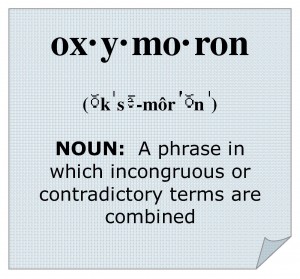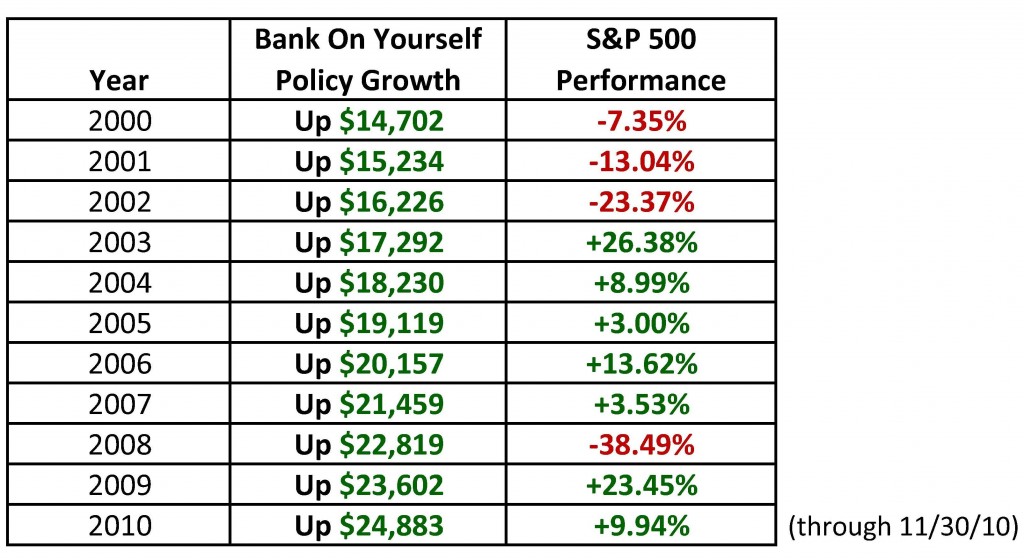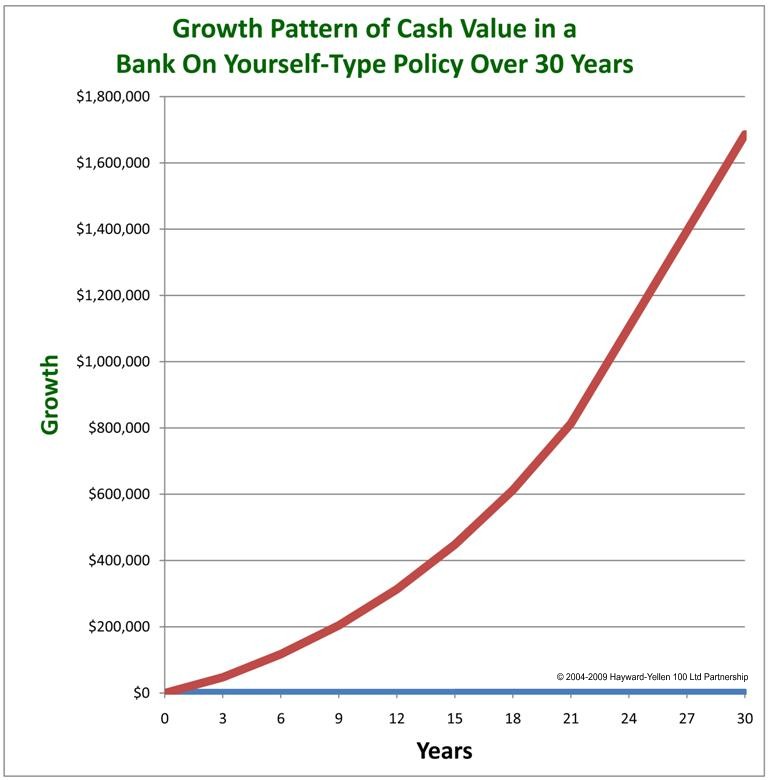Note: this post has been updated in November 2011
-$62,734.06. That’s the “unrealized” loss we’ve had in one of the mutual funds in our retirement account, according to the statement we just received.
A $62,734.06 unrealized loss.
I keep staring at the statement, hoping that number will somehow magically turn positive. After all, we’ve had a nice run-up in the stock market recently, and that mutual fund has one of the best long-term track records of any fund.
What the heck is an unrealized loss, anyway?
I realize I’ve lost a whole bunch of money. And I remember working my butt off to make that money!”
A $62,734 “unrealized loss.” Is that an oxymoron, like “Great Depression,” “small fortune,” “accurate forecast” and “quickly reboot”?


I dunno if it qualifies as an oxymoron. But I do know it’s moronic that we pin our hopes and plans for financial and retirement security on things we can’t predict or count on!
My husband Larry is 61 and theoretically four years away from retirement. He probably won’t retire when he’s 65 because he says he’d get bored. But if we were relying on the conventional wisdom about saving for retirement, it wouldn’t even be an option for him.
Did you know that 40% of retirees were forced to retire sooner than planned, due to health problems, job layoffs and other factors beyond their control?
Of course, none of us want to think that could happen to us… but what would you do if it did?
Another mutual fund in our retirement account shows an $8,012.16 “unrealized” gain.
And there lies the rub: You don’t actually lock in a gain or loss until you sell an investment.
(November 22, 2011 Update: Our most recent retirement account statement shows our “unrealized loss” is virtually unchanged since I wrote this blog post almost a year ago. And looking at the Dow’s ups and downs over the past year makes a day on the roller coasters at Six Flags look tame.)


Unfortunately, studies and history show that most of us are far more successful at locking in our losses than our gains.
Can you tell me what your retirement account will be worth on the day you plan to tap into it? (Not what you hope it will be.) If your answer is “no,” how can you even call it a plan? And what will you do if the market plunges by 50% – again – right before you planned to retire?
Contrast that with Bank On Yourself.
Last year around this time, I showed you how one of my Bank On Yourself policies had grown from the beginning of 2000 through the end of 2008, a period that included not one, but TWO devastating market crashes.
I did a side-by-side comparison with the growth of the S&P 500 over the same period.
Now I can give you an update for 2009 and 2010 on that comparison:

Bank On Yourself-type policies get better (more efficient) every single year, simply because they are engineered to do so!
Keep in mind that no two Bank On Yourself plans are alike…
Each is custom tailored to your unique situation, goals and dreams. To find out what your bottom-line, guaranteed numbers and results would be if you added Bank On Yourself to your financial plan, request a free, no-obligation Analysis now, if you haven’t already done so.

If you’re wondering where you’ll find the money to fund your plan, keep in mind the Bank On Yourself Professionals are masters at helping people find money they didn’t know they had to fund a plan. Here are the eight most common places they look.
The graph below shows the typical growth pattern in a Bank On Yourself-type policy. It’s based on one of my policies and shows the growth I’ve had so far, along with the growth I would have if the dividends stay where they are today. Right now, dividends – like interest rates – are at historic lows. If they increase, the growth will be greater. Keep in mind that dividends aren’t guaranteed, however, the companies preferred by the Bank On Yourself Professionals have paid dividends every single year for over 100 years.

So, will your policy growth look like the graph above?
If you’re referring to that growth curve that just keeps increasing every year at a steeper pace, the answer is “yes.” Because, as I noted above, that’s how these policies are designed to grow.
If you’re wondering if your actual numbers will be similar to the ones in the examples of my policies above, the answer is no. Because Bank On Yourself isn’t an off-the-shelf product.
Every policy is custom tailored to help you reach as many of your financial goals and dreams as possible, in the shortest time possible, given your situation today. This process is illustrated in Chapters 3-6 of my best-selling book.
If you haven’t already started to Bank On Yourself, you can take the first step now by requesting a free, no-obligation Analysis.
Do you make New Year’s resolutions?
 If one of your New Year’s resolutions is to get your financial house in order, you need to do more than just think about it and write it down. You need to take action.
If one of your New Year’s resolutions is to get your financial house in order, you need to do more than just think about it and write it down. You need to take action.
You need to lay the foundation down now that can ensure you never again suffer a “lost decade”… or even another lost year.
And when stocks, real estate and other investments continue on their endless roller-coaster ride, you can pull out your Bank On Yourself policy statements and sleep well knowing you have taken back control of your financial future.



Hi Pamela, I was looking at the table that shows your policy growth compared to the S & P. Does that include payments that you made to your policy or just interest and dividends earned in your policy
Thanks
Lisa
Hi Lisa,
It includes interest, dividends and my annual premium. Keep in mind that with dividend-paying whole life, your premium stays level until maturity.
~Pamela
hi, how do you help someone if they are a lottery winner?
The same way we’d help anyone – by looking at their overall situation and goals, and developing a plan custom-tailored for them.
To see how this would look for you, request a free Analysis.
I started a small BOY last year. Just wish I could have started a bigger one. If only there was a way to transfer some of my 401k with Vanguard into BOY I would
love to hear how. I’m 61 so there would not be any penality but just a lot of taxes.
But when I do retire I will move it out of my work 401k plan and into something else.
Maybe another BOY.
That’s the biggest regret people usually have! But talk to your Bank On Yourself Advisor about your options.
It would be very informative if you stated how much you actually paid in to the BOY policy over the 30 year period (and at what intervals). Otherwise, it is easy to dispute the actual growth of this BOY policy. Anyone can make a picture look great but when you dig down into the details you may find surprising facts.
I have a BOY policy and expect to get another. However, as a CPA, CIA, and CFE, it is in my nature to question anything someone shows or tells me. Percentages, graphs, etc. have much more meaning when you also disclose the details.
Hope this will help in further promoting BOY.
Bill
Hi Bill, I understand your concern and I actually did give more specific, detailed examples in my best-selling book.
The reasons I didn’t put the amount of premium I pay into this policy are:
That misses most of the point of Bank On Yourself!
And since no two polices are alike, the only way to see numbers that are going to look like your own is to have a Bank On Yourself Authorized Advisor do an Analysis for you.
So, you have those numbers for your own plan. Why would you need mine?
I know this will not be posted, so here goes; You skim over the fact that you are making premium payments. Which means you are putting your own capital into this “plan” and paying for a policy. You are LOSING money every time you make a payment to pay for a policy that YOU will never see because you will be dead when it pays back. If you kept putting money into the stock market thru regular monthy payments in the recent 10 year period and had a good financial advisor you would be way ahead of inflation right now with access to ALL of your money every day. This advertisement is the definition of Too Good to Be True ! Using FEAR to sell anything is a bad way to motivate people and not very fair advertising. Sorry, but that’s the way it is !
We publish most comments – even ones that have all the facts wrong… i.e., that you have to wait to die to benefit from your premium payments, and that you’d be ahead of inflation if you invested in the stock market over the past decade, and that you’d have access to all your money in the market everyday (you’d have to liquidate your stocks or borrow on margin to do that).
A persons BOY policy may be growing ,but if the dollar is losing value,
wouldn’t it be better to invest in gold or silver.
Read why Bank On Yourself is a strategy for any economy.
And before you invest in extremely volatile investments like gold and silver, I urge you to do your homework first and at least be aware of the historical ups and I downs of these precious metals.
For example, do you know how high gold would have to go to get you even with the high it reached in the 1980’s on an inflation-adjusted basis? (You should before you buy it.)
What about us older folks who are over say 60 years of age. Is there a benefit from making such a change and if so how so?
Regards,
Robert
Hi Robert,
That’s right in the “sweet spot” of those who can benefit from this. To find out what your bottom-line numbers and results could be if you added Bank On Yourself to your financial plan, request a free Analysis here.